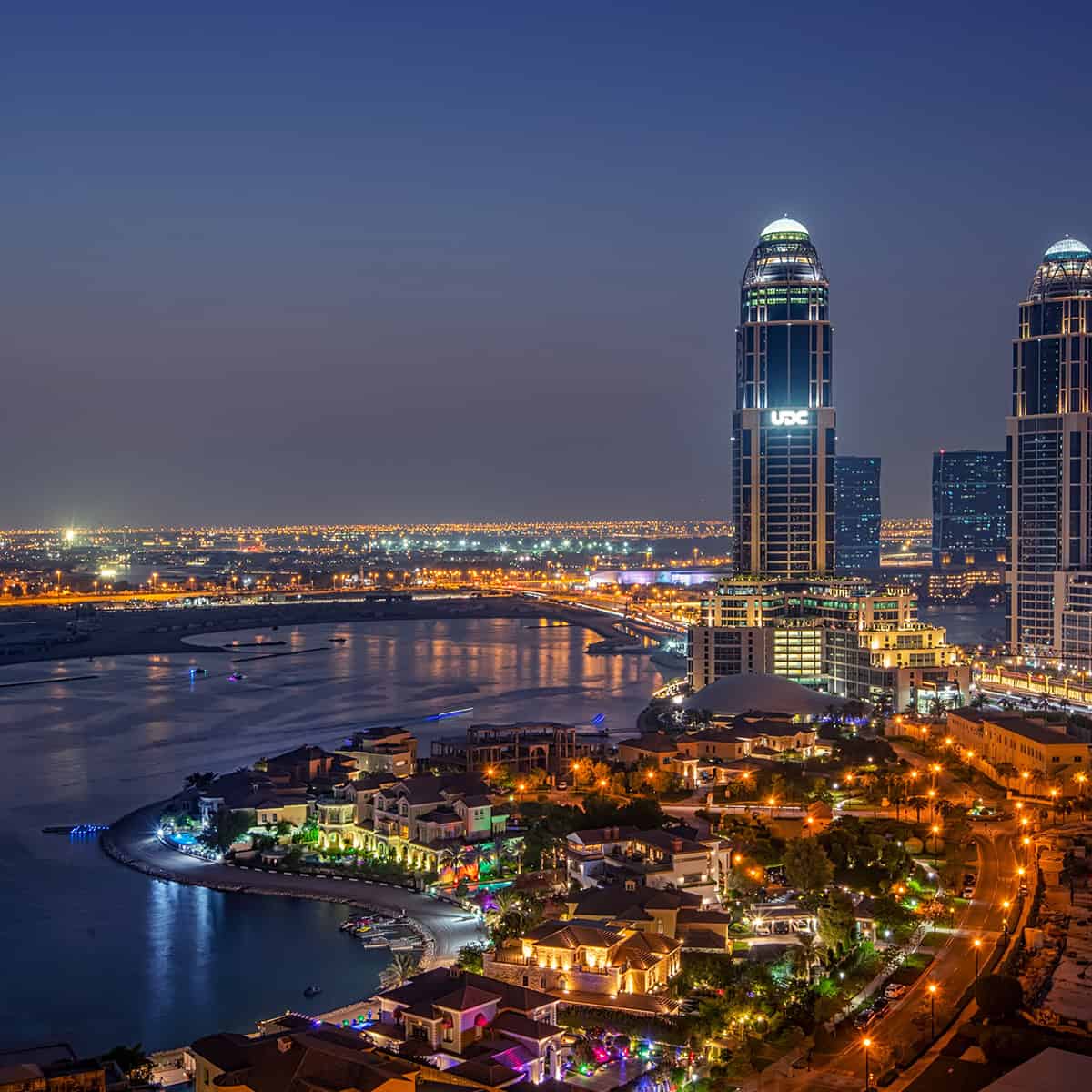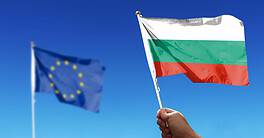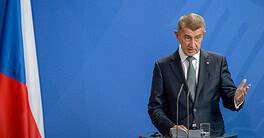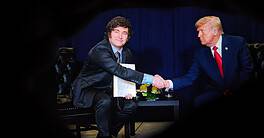The region’s transformation has turned the six GCC states into attractive destinations for international financial institutions and FDI.
Amid a global landscape characterized by sluggish growth, soaring interest rates, and inflationary pressures, the six Gulf Cooperation Council states stand out for their resilience. Growth across Saudi Arabia, the United Arab Emirates, Qatar, Kuwait, Oman, and Bahrain is expected to reach 3.7% this year, soundly outpacing the 2.9% global average, according to consulting firm PwC.
Western lenders and financial institutions are responding by strengthening their presence in the GCC as they scale back elsewhere.
“The GCC has increasingly become an attractive region for banks and investors,” says Antoine Chemali, CEO of BNP Paribas Wealth Management Middle East, which has over 600 employees in the UAE, Saudi Arabia, Bahrain, and Qatar. “The rise of the financial sector in the region creates demand on not only individual needs but also corporate banking and financial solutions.”
With most markets in the region outperforming their global peers, Rola Abu Manneh, CEO of Standard Chartered UAE, Middle East and Pakistan, says the GCC is contributing significantly to her bank’s strategic expansion strategy and its operating income growth.
“We are strategically targeting all markets across the GCC, tailoring our approach to each to leverage our strengths and meet the unique financial needs of our clients,” she says. “[Our] primary focus is on markets such as Saudi Arabia, the UAE, and Qatar, which lead the region’s economic diversification, with abundant opportunities in infrastructure, tourism, and the digital economy.”
It Started In Dubai
Boasting a business-friendly environment and liberal policies, the UAE emerged as a financial hub two decades ago with the creation of the Dubai International Finance Center in 2004. Today, the free zone welcomes over 2,000 companies, including such international banks as HSBC, Royal Bank of Scotland, and JPMorgan Chase. In 2023, Dubai’s Financial Services Authorities registered 117 new firms, a 25% increase from 2022.
More recently, Dubai has become particularly attractive to asset managers and hedge funds, with applications from the latter group increasing 125% year-on-year. Newcomers include US-based Millennium Management and Wellington Management and Hong Kong-based WRISE Wealth Management.
Just an hour from Dubai, Abu Dhabi, the Emirati capital, has become the region’s latest magnet for international finance. Last year, 1,825 companies were registered with Abu Dhabi’s financial center, ADGM, up 32% from 2022. In recent months, Wall Street giants including Morgan Stanley and Goldman Sachs have set up shop alongside private wealth management firms, family offices, and fintechs eyeing investment opportunities as the region fine-tunes its transformation from an oil-rich desert to a global financial hub.
“I am excited about the opportunities,” says Oualid Lahsini, MENA CEO for Brevan Howard, one of the world’s largest hedge funds, which opened in Abu Dhabi’s free zone in 2023. “Engagement with Abu Dhabi and the broader GCC region is a key part of our long-term strategy. We are trading almost a third of our capital from the region.
The GCC economies’ growth over the last 50 years has created “an extraordinary stock of wealth for the public and private actors alike,” Lahsini notes. “Those actors are growing in sophistication and increasingly expect to be serviced locally.”
Saudi Arabia, the Arab world’s biggest market, is the next big thing on every banker’s mind.
The kingdom has revamped its financial sector as firms consolidated to create some of the region’s largest lenders and new legislation eases entry for foreign players. The authorities have adopted a carrot-and-stick approach; foreign firms are only allowed to sign deals with government entities—most deals, as it happens—on the condition that they establish regional headquarters in the kingdom. Effective this year, the rule appears to be working. Goldman Sachs received approval to establish itself in Riyadh in May; BlackRock, the Edmond de Rothschild Group, Deutsche Bank, and others are in the process.
Financing Infrastructure Projects Is Key
Beyond its oil wealth, the GCC is boosting its attractiveness with a commitment to diversifying its economies. Each state has outlined its ambitions: Saudi Arabia, Qatar, and Bahrain with Vision 2030; Kuwait with Vision 2035; and the UAE with We the UAE 2031.
“The rise of the region is spearheaded by the UAE and Saudi Arabia,” says Chemali, both of which are attracting talent and capital with ambitious projects backed by strong support and investments from governments.
One facet of this drive is heavy investment in infrastructure projects. Notable examples include Neom, Saudi Arabia’s $500 billion futuristic city; Diriyah, Qiddiya, and Al-Ula, the kingdom’s tourism megaprojects; the UAE’s vast solar farms; Qatar’s North Field gas expansion, and the Gulf Railway, slated to connect all six GCC states.
“Financing infrastructure projects is key to creating jobs and opportunities across the region in the long run,” says Abu Manneh. “Encouragingly, GCC governments have adopted this long-term view, which has helped the pipeline of projects to remain strong.” International developers have also stayed engaged. Standard Chartered is among the international lenders providing diversified funding sources for projects including Neom and the North Field gas expansion.
While some critics argue these projects may be overly ambitious, substantial government backing makes them attractive to foreign investors.
“The region’s minimal funding requirements and significant inflows of foreign investment enhance its stability and allure for investors,” Abu Manneh notes.
In contrast to other parts of the world, the GCC’s transformation is powered for the most part by the Gulf states themselves through their large sovereign wealth funds. Often referred to as the “Oil Five,” Saudi Arabia’s Public Investment Fund; the Abu Dhabi Investment Authority, Mubadala Investment Company and ADQ in Abu Dhabi; and the Qatar Investment Authority are among the world’s largest and most active SWFs. The combined assets of the GCC’s 19 sovereign funds will reach $7.6 trillion by 2030, doubling from 2023 and the equivalent to the combined annual GDPs of the UK and Germany, according to industry tracker GlobalSWF’s 2024 annual report.
Financial Sector Overhaul
The GCC states are also leveraging deep financial-sector reforms to attract global investors. Many have introduced structural changes to their capital markets, leading to a surge in initial public offerings.
“The launch of innovative investment products, enhancements in post-trade infrastructure, and an increase in IPO activities have rendered the market more vibrant and approachable,” Abu Manneh says.
According to EY, the entire MENA region saw 48 IPOs in 2023, raising a total of $10.7 billion. The most significant market debut was ADES, the Saudi oil and gas drilling firm, which drew $1.2 billion, followed by Abu Dhabi’s Pure Health with $986 million. Saudi Aramco’s 2019 IPO remains the largest in history, raising $25.6 billion. Tens more companies are expected to list in 2024 and several GCC members are planning to privatize state assets; Oman, for one, aims to sell shares in at least 30 state-owned companies over the next five years.
Promisingly, financial-sector reforms have spurred investment across more sectors than just energy, including tourism, new technologies, and artificial intelligence, the latter of which the GCC economies aim to be at the forefront. Saudi Arabia plans to create a $40 billion fund to invest in AI, and in April, Microsoft committed $1.5 billion to G42 following the announcement of the Emirati AI firm’s partnership with OpenAI. This flurry of activity promises to add legs to the GCC states’ robust non-oil sector growth of 4.3% in 2023.
There is more work ahead on the financial front, Lahsini says. “Local capital markets are still very dominated by the equity story,” he says, “and I believe more can be done to develop fixed income and credit markets and to provide local actors with more options to fuel the growth.”
That said, the GCC states are solidifying their position as an attractive destination for foreign capital, while consistent government support and substantial financial resources are paving the way for a growing influx of international financial institutions.




